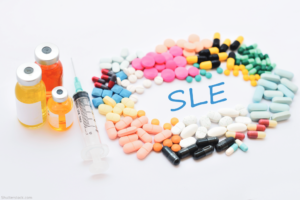 PHILADELPHIA—On Saturday, Nov. 12, at ACR Convergence 2022, Joan T. Merrill, MD, director of clinical projects in the Arthritis & Clinical Immunology Program at the Oklahoma Medical Research Foundation in Oklahoma City, gave a presentation on the future of drug development and treatments for systemic lupus erythematosus (SLE). She described how an in-depth understanding of specific subsets of patients with lupus, and of specific drug effects and interactions, can lead to better treatments for patients.
PHILADELPHIA—On Saturday, Nov. 12, at ACR Convergence 2022, Joan T. Merrill, MD, director of clinical projects in the Arthritis & Clinical Immunology Program at the Oklahoma Medical Research Foundation in Oklahoma City, gave a presentation on the future of drug development and treatments for systemic lupus erythematosus (SLE). She described how an in-depth understanding of specific subsets of patients with lupus, and of specific drug effects and interactions, can lead to better treatments for patients.
Pathophysiology & Heterogeneity
Dr. Merrill began by touching on the complex pathophysiology of SLE, which involves both an initial innate immune response, including the production of interferons and other cytokines, and a later adaptive immune response, in which the stimulation of B cells is central. Dr. Merrill commented on the many different cellular pathways and interacting proteins involved in this pathophysiology. She also noted how variants in many different genes may play a role in perpetuating these disease activation pathways.
“We know this is not a single-gene disease,” she said.
Dr. Merrill described the unpredictable, complex, heterogeneous nature of the clinical manifestations of SLE, which can vary in the organ systems affected and in disease severity. The disease is also heterogeneous on a molecular level, with different groups of genes and their respective proteins upregulated or downregulated in certain subsets of lupus patients, creating another level of complexity.
Through machine-based learning approaches, Dr. Merrill’s colleagues at the Oklahoma Medical Research Foundation, Joel M. Guthridge, PhD, and Judith A. James, MD, PhD, have identified seven different clusters of lupus patients based on molecular and immunological profiles, distinct from clinical features, such as arthritis or nephritis.1 Dr. Merrill pointed out that patients can move from cluster to cluster depending on their disease activity, their medications and other factors. Thus, she believes lupus should still be considered a single disease entity, although a multifaceted one.
Challenges of Lupus Drug Development
This disease’s fluidity and heterogeneity are part of what has made drug development for lupus so challenging. If only subsets of lupus patients are likely to respond to a given therapy because of differences in disease pathophysiology, background treatment and other factors, the overall effectiveness rates in lupus trials will be lower, even if a treatment could be very effective for specific subsets of lupus patients.
“Between 2003 and 2011, 30 different intellectually promising drugs went into development for lupus, and 29 of them failed,” Dr. Merrill said. The U.S. Food & Drug Administration (FDA) did approve belimumab in 2011, making it the first drug approved for lupus in more than 50 years.
